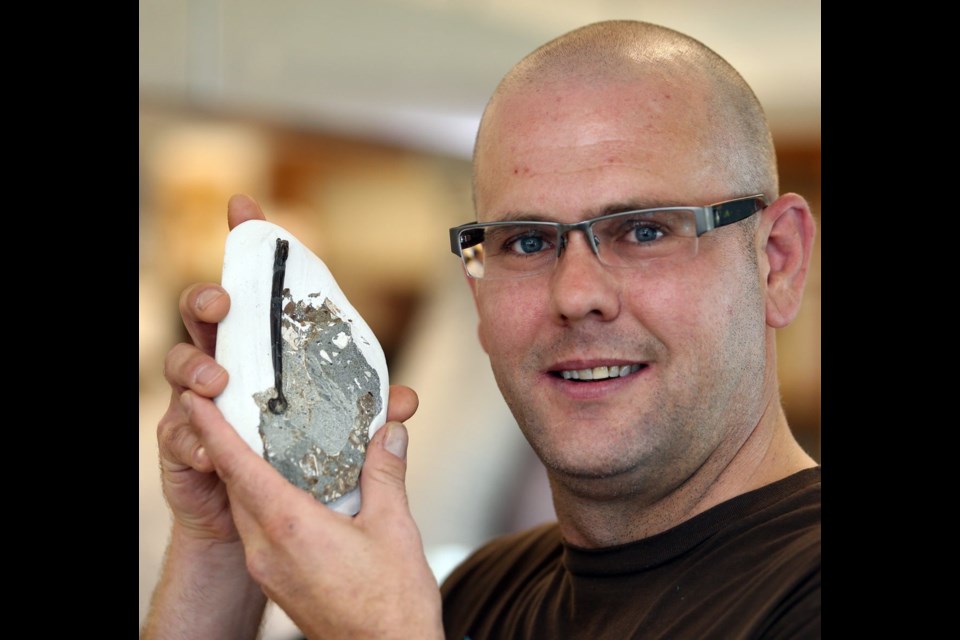Steve Suntok was searching a beach northwest of Sooke on the B.C. Day long weekend when he saw what looked like a black pine needle nestled in the bedrock.
He pulled out his tools, including a hammer and a chisel, and quickly excavated what turned out to be a 25-million-year-old fossilized bird shinbone.
This is the first bird bone to be discovered in the Carmanah rock groups — which stretches from Sooke to Brooks Peninsula — in 120 years.
“It’s really rare to find fossils. I usually get skunked five or six times before I find something,” said Suntok, who works as a criminal defence lawyer.
“Once I saw it was hollow and possibly a bird bone, I got really excited.”
The area Suntok was excavating is only visibile six times a year at low tide. This was the second last time it would visible this year and he was worried if he didn’t unearth it now, it would be gone when he returned. He had the bone excavated in 20 minutes, pulling the rock free while it was submerged in the oncoming tide.
An amateur paleontologist, Suntok became interested in the field five years ago after seeing an exhibit at the Royal B.C. Museum and realizing the Island has a wide diversity of fossils.
He spends Sundays searching beaches up and down the coast to locate fossils, estimating he’s gone on about 400 fossil expeditions and only found bones seven times. He’s found whale vertebrae, shell fossils and now a fossilized shinbone of a bird.
Suntok called a friend, who then called a researcher in Ireland who confirmed it appeared to be a bird fossil.
He decided the best course of action was to donate it to the place that got him hooked on fossils in the first place: the Royal B.C. Museum.
“This is a great find, especially from someone who has this dedication to fossils,” said Gary Kaiser, a research associate with the museum and a fossil bird expert.
Suntok’s find was dated using radioisotopes.
Kaiser said the bone closely resembles the shinbone of a modern Brandt’s cormorant and hopes the discovery helps lead to identifying other extinct bird groups.
August and September are usually the busiest time of year for fossil donations at the museum.
Dr. Richard Hebda, curator of earth history and botany at the museum, said staff field two requests every day from people asking the museum to examine their possible fossils.
Hebda hopes the discovery encourages other amateur paleontologists to follow Suntok’s careful approach and bring what they find to researchers.
“Fossils are treasure for everybody,” he said. “If people collect them and just keep them at home, then we’ll never know our own story.”



